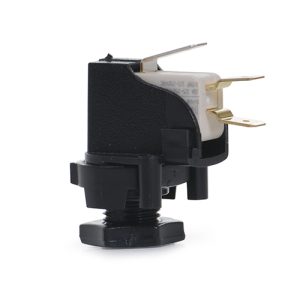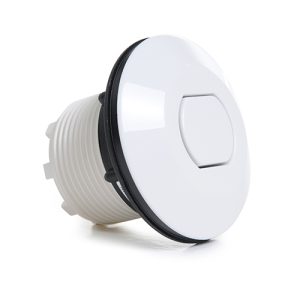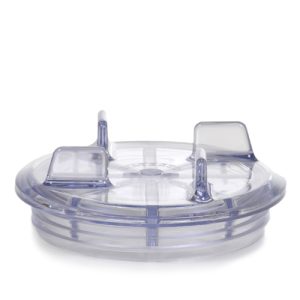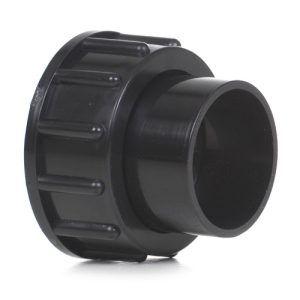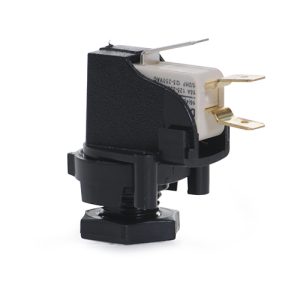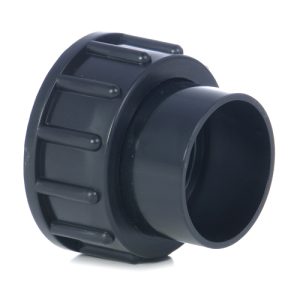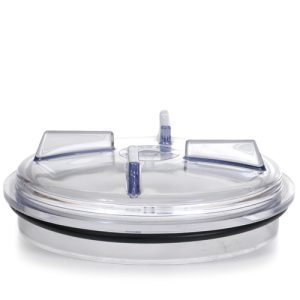BIO-UV10 Lamp 33W High Output
High-Performance Germicidal UV Lamp for Compact Water Treatment
As a retailer of hot tub spare parts and pool equipment, I supply this essential replacement UV lamp specifically engineered for BIO-UV’s UV10 series water treatment systems. The 33W high-output germicidal lamp represents the core component responsible for delivering ultraviolet radiation at 254nm wavelength, the optimal frequency for destroying microorganisms’ DNA and providing effective water disinfection. This lamp combines compact dimensions with substantial UV-C output, making it ideal for residential pool, spa, and small commercial water treatment applications.
Understanding Germicidal UV Lamp Technology
The BIO-UV10 Lamp operates on low-pressure mercury vapour discharge principles, generating intense ultraviolet radiation at the germicidal wavelength of 254 nanometers. When electrical current passes through the lamp’s mercury vapour, electrons excite mercury atoms to higher energy states. As these atoms return to their ground state, they emit photons at specific wavelengths, with 254nm representing the primary emission line. This wavelength corresponds to maximum absorption by DNA and RNA molecules, making it devastatingly effective at inactivating bacteria, viruses, protozoa, and other waterborne pathogens.
The “high output” designation indicates this lamp produces enhanced UV-C intensity compared to standard designs operating at similar wattage. High-output lamps achieve greater photon flux through optimized mercury fill pressures, specialized phosphor coatings on some designs, and precise control of operating temperatures. This enhanced output enables more effective water treatment in compact reactor configurations, delivering sufficient UV dosage at practical flow rates despite the smaller chamber volumes characteristic of UV10 systems.
Power Rating and System Integration
The 33W power specification reflects the lamp’s electrical consumption during steady-state operation, representing the energy converted into UV radiation, visible light, and heat. This power level positions the lamp optimally for compact UV reactors serving residential pools, hot tubs, and small commercial applications where flow rates typically range from several to tens of gallons per minute. The 33W rating works in conjunction with the BIO-UV10 Ballast (35-48W range), which provides the regulated power necessary to maintain stable lamp operation throughout the lamp’s service life.
The lamp’s physical dimensions (0.76m length) indicate a compact design suitable for smaller reactor chambers while providing sufficient arc length for effective UV exposure as water flows past the lamp. The relatively long, narrow form factor (0.06m width and height) maximizes the surface area available for UV emission while fitting within standard reactor tube diameters.
Lamp Construction and Materials
The lamp consists of a precision-manufactured quartz tube housing two electrodes at opposite ends, with a carefully controlled quantity of mercury sealed within an inert gas atmosphere (typically argon or neon). Quartz glass is essential for UV transmission, as conventional borosilicate glass absorbs much of the germicidal 254nm radiation. High-quality quartz maintains excellent UV transparency throughout the lamp’s service life, with transmission efficiency exceeding 90% at the germicidal wavelength.
The electrodes feature tungsten filaments coated with electron-emissive materials that facilitate arc initiation and stable operation. These coatings gradually erode during lamp operation, with coating depletion ultimately determining lamp service life. The mercury fill quantity and pressure are precisely controlled during manufacturing, as these parameters critically influence both UV output intensity and the lamp’s operational characteristics.
UV-C Output and Germicidal Effectiveness
The lamp generates intense UV-C radiation that inactivates microorganisms through direct DNA and RNA damage. When UV photons at 254nm strike nucleic acids, they cause adjacent thymine bases to bond abnormally, creating thymine dimers that prevent DNA replication and transcription. Microorganisms with damaged genetic material cannot reproduce or express proteins necessary for cellular function, rendering them harmless even though they may remain physically intact.
The germicidal effectiveness depends on UV dosage, measured in millijoule-seconds per square centimeter (mJ/cm²) or microwatt-seconds per square centimeter (μWs/cm²). Effective water treatment typically requires doses of 30-40 mJ/cm² or higher, with specific targets varying based on the pathogens of concern and desired inactivation levels. The BIO-UV10 Lamp’s high output ensures adequate dosage delivery at practical flow rates within the reactor’s design parameters.
Operating Temperature and Efficiency
UV lamp efficiency varies significantly with operating temperature, with optimal UV-C output occurring when the lamp’s coldest spot maintains approximately 40°C (104°F). At this temperature, mercury vapour pressure reaches the ideal level for maximum 254nm emission. Higher or lower temperatures shift mercury vapour pressure away from optimal, reducing UV output. In water treatment applications, flowing water provides cooling that helps maintain lamps within their optimal temperature range, though flow rates must be balanced to prevent excessive cooling that would reduce UV output.
The quartz sleeve surrounding the lamp in the reactor assembly provides thermal insulation that helps maintain optimal lamp temperature despite varying water temperatures. This sleeve also protects the lamp from direct water contact and facilitates cleaning to remove mineral deposits that could block UV transmission.
Lamp Life and Replacement Intervals
UV germicidal lamps gradually lose output intensity throughout their operational life, even though they continue producing visible light and consuming rated power. This degradation results from several mechanisms: mercury depletion through chemical reactions with electrode materials, electrode coating erosion that increases striking voltage and reduces efficiency, and potential quartz solarization that reduces UV transmission. Manufacturers typically rate lamps for 8,000-13,000 hours of operation, corresponding to 9-18 months of continuous use.
BIO-UV recommends lamp replacement based on accumulated operating hours rather than waiting for complete failure. Operating lamps beyond their rated life risks inadequate UV dosage for effective water treatment, as output may decline to 70-80% of initial intensity by end-of-life. Many UV systems incorporate lamp hour meters or ballasts with end-of-life detection to facilitate timely replacement.
Installation and Handling Procedures
Proper lamp installation requires careful handling to prevent damage and contamination. The quartz surface must never be touched with bare hands, as oils from skin create hot spots that can cause premature lamp failure or quartz fracture. Cotton gloves or clean paper towels should be used when handling lamps. If the quartz surface is accidentally touched, it must be cleaned with isopropyl alcohol and dried before installation.
During installation, the lamp must be properly seated in its electrical connections at both ends, with secure mechanical retention preventing vibration or movement during operation. The lamp orientation within the reactor should follow manufacturer specifications, as some designs optimize UV distribution based on specific lamp positioning. After installation, visual inspection confirms the lamp strikes properly and establishes stable operation before returning the system to service.
Safety Considerations
UV-C radiation at 254nm is harmful to human eyes and skin, causing painful photokeratitis (similar to “welder’s flash”) with even brief exposure to direct UV light. The lamp should never be operated outside the reactor chamber, and reactor systems must incorporate interlocks that prevent UV lamp operation when access panels are opened. During maintenance procedures when lamps must be handled while potentially energized, appropriate UV-protective eyewear and skin protection are essential.
The lamp contains small quantities of mercury, requiring proper disposal through appropriate recycling channels rather than discarding with general waste. Many jurisdictions regulate mercury-containing lamp disposal, and lamp manufacturers or recycling facilities can provide guidance on proper disposal procedures.
Technical Specifications
| Specification | Details |
|---|---|
| Product Name | BIO-UV10 Lamp 33W High Output |
| SKU | 7111676010 |
| Category | UV System Spare Parts |
| Compatible Equipment | BIO-UV UV10 Series Systems |
| Power Rating | 33W |
| Output Type | High Output Germicidal |
| Weight | 0.6 kg |
| Dimensions (L x W x H) | 0.76m x 0.06m x 0.06m |
| Volume | 0.002736 m³ |
| UV Wavelength | 254nm (UV-C Germicidal) |
| Lamp Technology | Low-Pressure Mercury Vapour |
| Typical Service Life | 8,000-13,000 Hours |
| Material | Quartz Glass Tube |
Maintaining Peak Water Treatment Performance
The UV lamp represents the consumable element at the heart of ultraviolet water treatment systems, making its timely replacement essential for maintaining effective germicidal performance. While the BIO-UV10 system’s ballast, reactor chamber, and plumbing infrastructure provide years of reliable service, the UV lamp requires periodic replacement to ensure consistent water quality. By maintaining proper lamp replacement schedules based on operating hours, following correct installation procedures, and using genuine BIO-UV replacement lamps, system operators ensure their UV investment continues delivering the reliable pathogen inactivation that justifies UV technology adoption in pool and spa applications. The lamp’s high-output design maximizes treatment effectiveness within compact reactor configurations, making it an optimal choice for residential and small commercial water treatment where space efficiency and performance must be balanced.
| Weight | 0.6 Kilograms |
|---|---|
| Length | 0.76 Meters |
| Width | 0.06 Meters |
| Height | 0.06 Meters |
| Volume | 0.002736 CubicMeters |
| Supplier | GoldenC |
Related products
Spares



